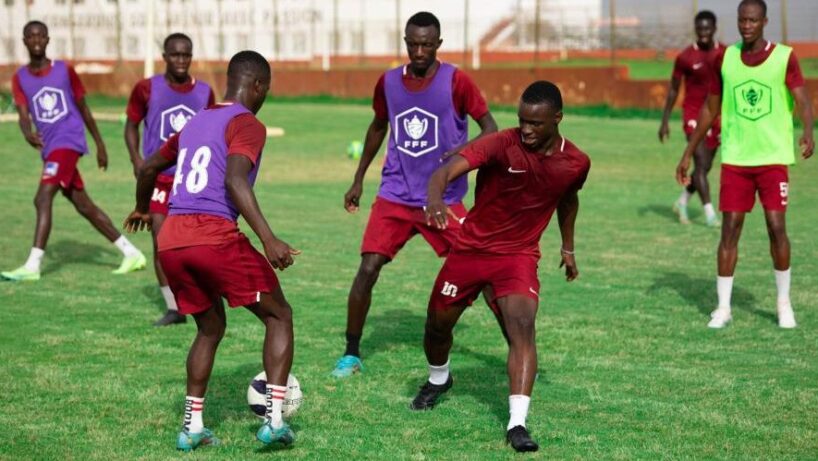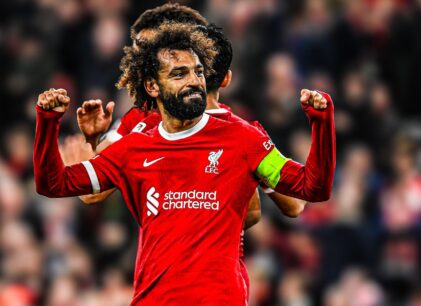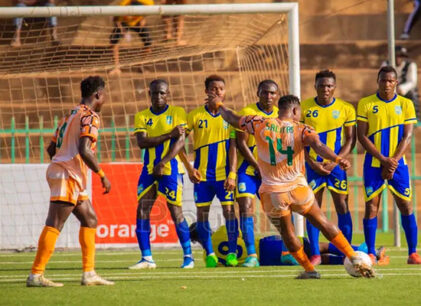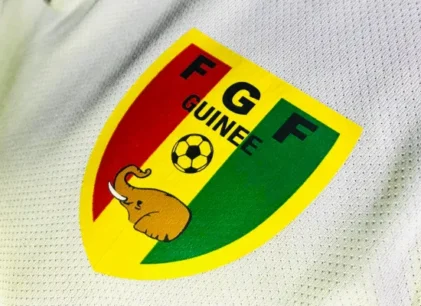The 2nd qualifying round of the African Club Cup kicks off on September 15. After the elimination of Génération Foot in the Champions League and Casa Sports in the CAF Cup, there will be no Senegalese clubs taking part. This umpteenth failure on the part of Senegalese clubs is the result of a precarious environment for local soccer and a distinct lack of ambition on the part of club managers in the land of Teranga.
An organization that penalizes
For once, there will be no Senegalese clubs in the group stages of the two African club competitions, the Champions League and the CAF Cup. The two representatives, Génération Foot and Casa Sport, were eliminated respectively by Hafia de Conakry (Guinea) and Étoile Filante de Ouagadougou (Burkina Faso). Even if there were no more expectations than usual, the pill remains hard to swallow for local soccer fans in Senegal. The lower quality of the opponents is the reason for this major disappointment.
Senegalese clubs even came close to missing out on the 2023-2024 African Cup campaign. The reason? The backlog of league and cup fixtures. This poses an organizational problem for the Ligue sénégalaise de soccer professionnel (LSFP) and the Fédération sénégalaise de soccer (FSF).“In terms of organization, there’s a scheduling problem. When African club competitions start, our clubs are at the end of the season or at a standstill. This is not conducive to the performance of our clubs, who are on vacation,” explains sports journalist Harouna Dème.
Senegal is a special country with its famous “Navétane”. This popular neighborhood soccer competition is supposed to be held between July and October during the summer vacations. For some years now, this national tournament, which uses the same infrastructure as the local championship, has been played until December, and even beyond.This has led to a collision, often forcing the authorities to postpone the championship.The result? The season ends between July and August. This is a problem for clubs involved in the CAF Cup in the middle of the mercato period. “The end-of-season squads are lost, as we saw with Génération Foot and Casa Sport when they entered these CAF competitions”, points out Harouna Dème.
Minimal continental ambitions
It’s the same waltz every year for all Senegalese clubs, especially those taking part in CAF competitions.At the end of each season, the best players leave for Europe, North Africa and even countries in the sub-region.“The best players leave, even the average players leave the championship. This is perfectly normal given the conditions our players find themselves in,” explains Harouna Dème. At the slightest request, they leave for other countries. Even in the sub-region, in Guinea, Mauritania… Some of our clubs don’t pay salaries regularly”.
The impoverished ecosystem of Senegalese soccer favors this massive exodus of top Senegalese league talent. A situation exacerbated by the lack of vision on the part of club managers.There’s a lack of ambition on their part,” asserts Dème.It’s true that they’re the ones who put in the money, but they’re the first to take it when one of their players is sold. It’s incongruous for a game that aspires to professionalism.Our managers are not structured to plan a project over 5 to 10 years. A project where they keep their best players, with one or two sales, but keep a competitive team to perform well in Africa,” he laments. This incessant ballet is not conducive to the clubs’ performance on the continental stage, with a heavily renewed squad lacking experience of these CAF jousts.“The team that best reflects the difficulty our clubs have in retaining their best players is Génération Foot, with 22 of its players transferred since January 2023.How can a Senegalese champion hope to reach the group phase of the Champions League with so many players sold,” asks the sports journalist. You end up with cadets and juniors who aren’t seasoned, who don’t have the experience of the players who left. It’s the failure of the local Senegalese soccer system,” he added.
Jeanne d’Arc of the 2000s, a model to follow
Professionalism was introduced to Senegalese soccer in 2009.A 180-degree turn that has not had the expected effect, 15 years on.“It’s been a bit of a disservice to the clubs, who don’t have a good organization, a sound financial base or a legal framework that enables them to remain attractive, and to train, coach and retain players to perform well on the African scene,” confides Harouna Dème. Before qualifying: “That said, in amateur soccer, training clubs have a share in transfers. In the amateur era, Senegal transferred players like Ousmane Ndoye (Jeanne d’Arc to Toulouse FC)”.
At a time when Senegal’s national teams are shining, and even the home team has won the CHAN, the clubs are continuing to slide down the continental ladder. Yet it was during the amateur era that Senegalese clubs achieved their best results, with Jeanne d’Arc reaching the final of the CAF Cup in 1998 and the semi-finals of the Champions League in 2004.“This JA was in a way the model.What professional clubs are doing today, paying salaries and recruiting the best, is what the JA did in the early 2000s. Oumar Seck, the club’s president at the time, said he wanted to confiscate the Senegalese league title for 5 years to enable his players to play regularly in the Champions League and rub shoulders with the best,” recalled the experienced journalist.
Beaten in the 1998 CAF Cup final by CS Sfax, the Jeanne d’Arc had a number of internationals from Senegal and neighbouring countries in its ranks. “He went in search of the best players in the league, because he paid good salaries and offered better conditions than today. He also recruited foreign players. He brought in Konaté, a Gambian right-back, Koné who played for Mali at the 2002 AFCON, and Ouedraogo from Burkina Faso… 20 years ago, he did what Horoya does today. This is what would enable Senegalese soccer to progress. That’s what our clubs should have been based on,” insists Dème.
“What Senegalese soccer lacks is presidents and managers capable of coming up with the right ideas, with sufficient administrative, technical and financial support to build the best teams.Soccer is certainly about the pitch, but the work behind the scenes is extremely decisive,” he concluded.
Local soccer was invited by the Senegalese government to present a project for its revival following the CHAN victory last February. Seven months later, nothing has happened. The culture of the status quo and the complacency of its leaders seem to be the main faults of local Senegalese soccer.





